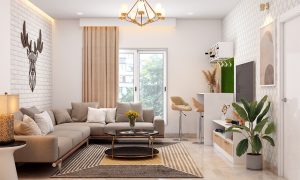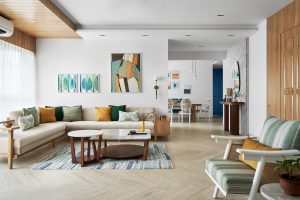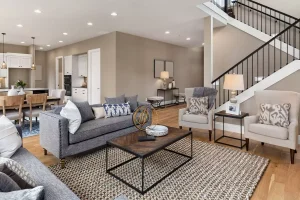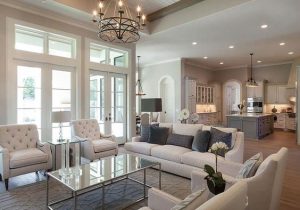The living room: the heart of the home. It’s where we gather with loved ones, relax after a long day, and entertain guests. But transforming this space into a functional and inviting haven can be a challenge, especially with rooms of different shapes and sizes. Fear not, fellow decor enthusiasts! This guide unveils clever hacks to maximize the potential of any living room layout.
Understanding Your Living Room Layout Shape
The first step to creating a magical layout is understanding the unique shape of your living room. Here’s a breakdown of the most common shapes and some initial tips:
• Rectangular Living Room Layout: This is a classic layout found in many homes.

o Tip: Divide the room into distinct conversation areas using furniture placement and area rugs.
• L-Shaped Living Room Layout: This layout offers more flexibility and can be tricky to navigate.

o Tip: Use the shorter arm of the L for a dedicated function like a reading nook or home office.
• Open Floor Plan: This modern style combines living, dining, and sometimes kitchen areas.

o Tip: Use furniture arrangement, rugs, and room dividers to create a sense of definition within the open space.
• Square Living Room Layout: This layout offers a sense of balance but might feel cramped.

o Tip: Go for diagonal furniture placement to create a more dynamic flow.
Beyond the Basics: Layout Strategies for Different Needs
Now that you understand your living room’s shape, let’s research deeper into specific layout strategies for various needs:
Creating Conversation Areas
No matter your living room’s shape, fostering conversation is key. Here’s how to achieve it:
• Furniture Grouping: Arrange sofas, armchairs, and ottomans to face each other, fostering a natural flow of conversation.
o Pro Tip: Maintain a comfortable distance between seating (around 3-4 feet) for easy interaction.
• Coffee Table Magic: The coffee table acts as the anchor of your conversation area. Choose a size and style that complements your furniture and allows for easy conversation across it.
• Area Rug Definition: Define the conversation area with a rug that’s large enough to comfortably fit all the furniture under it, leaving around 8-12 inches of exposed floor around the edges.
Maximizing Traffic Flow
Imagine a smooth flow of people throughout your living room. Here’s how to achieve a balanced traffic pattern:
• Leave Breathing Room: Avoid creating furniture bottlenecks that disrupt movement. Aim for at least 3 feet of clearance between furniture pieces and walkways.
• Strategic Placement: Don’t block doorways or windows with furniture. Position larger pieces like sofas against walls, allowing clear pathways.
• Consider Furniture Scale: Choose furniture pieces that fit proportionally within your living room. Oversized furniture can restrict movement, while undersized pieces make the space feel empty.
Making the Most of Limited Space (Small Living Room Layout Hacks)
Living in a cozy space doesn’t have to limit your living room’s potential. Here are tricks to maximize a small living room:
• Multifunctional Furniture: Go for furniture that serves multiple purposes. Ottomans with storage, coffee tables with lift tops, and futons that convert into beds are lifesavers in small spaces.
• Smart Furniture Arrangement: Push furniture against walls to create a sense of spaciousness. Consider floating your sofa to open up the room visually.
• Light and Bright: Light colors on walls and furniture reflect light, making the space feel larger. Go for sheer curtains to allow natural light to flow freely.
Open Floor Plan Solutions: Creating Definition
Open floor plans offer a sense of airiness but can sometimes feel undefined. Here’s how to create designated areas:
• Furniture as Dividers: Use the backs of sofas or bookshelves to beautifully separate areas like the living room and dining room.
• Rug Layering: Layer smaller rugs to define different sections within the open space. For example, use a large rug to anchor the living room area and a smaller one under the dining table.
• Room Dividers: Go for freestanding room dividers with open shelves or hanging plants to create a visual and functional separation.
Bonus Tip: Embrace the Power of Scale and Proportion
Creating a balanced living room layout goes beyond just furniture placement. Consider the scale and proportion of your furniture and decor elements:
• Furniture Scale: Large furniture might overpower a small space, while small furniture can make a large room feel empty. Choose pieces that fit proportionally within your living room.
• Balance with Decor: Use artwork, mirrors, and plants to visually balance the space. Hang large artwork above the sofa to create a focal point and use smaller pieces on other walls for balance.
Conclusion:
Your living room is the heart of your home, where moments are shared and memories are made. By understanding its shape—rectangular, L-shaped, open-plan, or square—you can transform it into a functional haven. From creating conversation areas to maximizing space, these hacks help you design a balanced, inviting space that reflects your style and enhances your home’s atmosphere.